The best Canon camera in 2025: Canon's top mirrorless, DSLRs and compacts
I run down the best Canon cameras of all kinds for beginners, enthusiasts, and professionals
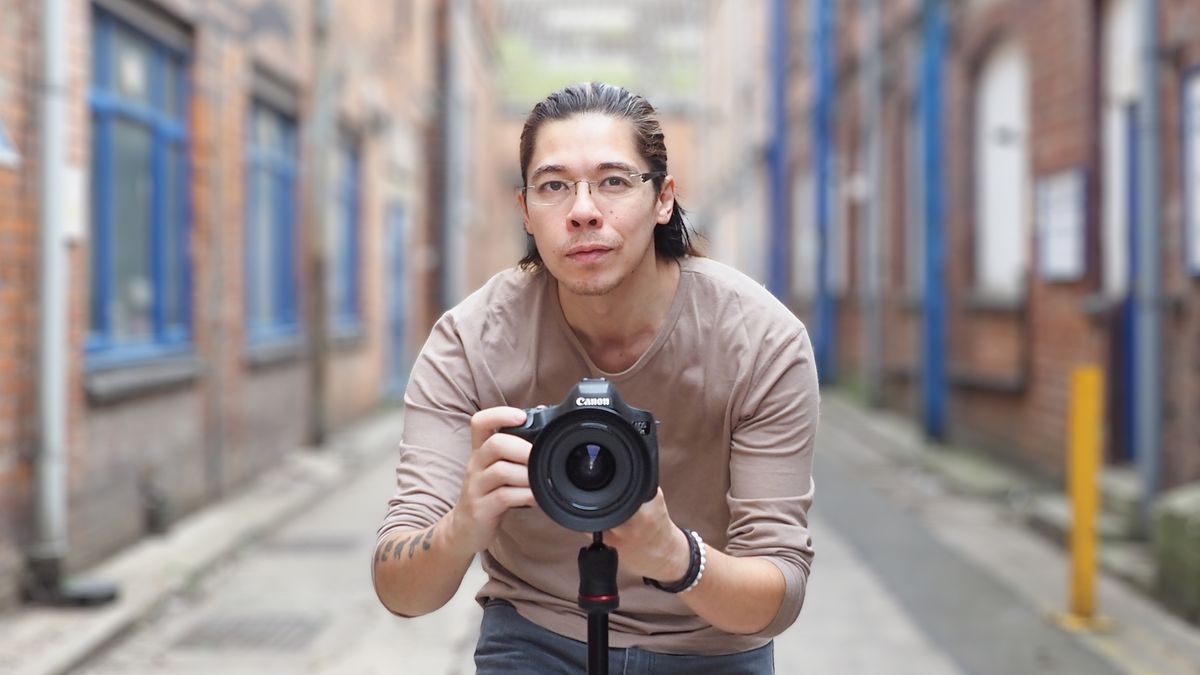
I haven’t just been testing Canon cameras for Digital Camera World for years – I’ve been using them throughout my entire photographic career. From the era of film cameras and DSLRs to Canon's latest EOS R mirrorless models, I've experienced it all. Now, I’m here to tell you which ones I’d personally choose, whether you're just starting out in photography or a seasoned pro looking for fresh ideas.
Choosing the best Canon camera can be tough – there are so many to choose from! After all, Canon is the largest camera manufacturer in the world, offering everything from budget-friendly beginner bodies to cameras used for filming movies.
In my opinion, the Canon EOS R5 II is the best overall. I personally bought it because there’s simply nothing it can't do. With its 45MP sensor (capable of shooting up to 180MP upscaled images!), 8K video, 30fps burst, and eye-controlled autofocus, it’s a technological marvel – no wonder I called it "still the best damn camera you can buy."
But it's not just about raw power! The key is finding the right tool for the job. I’ve selected Canon cameras for every category, from wildlife and weddings to macro and video. I’ve broken things down so you can easily find exactly what you need based on your shooting style.

My first camera was the Canon AE-1, and since then I've been using everything from PowerShot snappers to Cinema EOS monsters personally and professionally. I used to write for our print publication PhotoPlus: The Canon Magazine, so I'm well placed to help you work out which is the best Canon camera for you!
Recent updates
I added the Canon EOS R5 Mark II camera to the list as it is finally becoming available in stores worldwide. This replaced the original EOS R5 as the new version supersedes it in every way (except price).
The Quick List
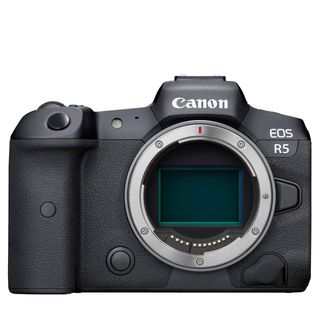
This camera is so good that I bought one! The finest camera Canon has ever made, and the best all-rounder on the market: 45MP stills, 30fps bursts, 8K video (with 36MP Frame Grab), great stabilization, and the best autofocus in the business.
Read more below

Budget DSLRs have always been a great way to get started in photography, and I think the SL3 (250D in Europe) is a brilliant bang-for-buck camera. Yes it's older tech, but it's cheap as chips and packs a powerful 24.1MP sensor with 4K video capability.
Read more below

An APS-C powerhouse, the R7 is a great all-rounder but is excellent for wildlife. Its 32.5MP sensor tons of resolution, and the 1.6x crop factor makes your lenses even longer – so they "zoom in" more than they do on a full-frame camera!
Read more below

Just starting in photography? Look no further! This mirrorless marvel has guided menus to help you unlock its features and discover photographic techniques. It's very capable, too, with a punchy 24.1MP APS-C sensor and fantastic autofocus.
Read more below

I always loved the 6-series DSLRs, and the 6D Mark II continues that lineage of great all-rounders. This hybrid camera captures 24.4MP stills at blistering bursts of up to 40fps, and crisp 4K video up to 180p, with dual card slots and great stabilization.
Read more below

Canon's flagship camera, the R3 is a powerful pro tool with 6K RAW video, 30fps burst shooting, great battery life, top weather-sealing… and the viewfinder tracks your eye, so you can shift focus just by looking (and it even works with my glasses on)!
Read more below
View the full list ⤵
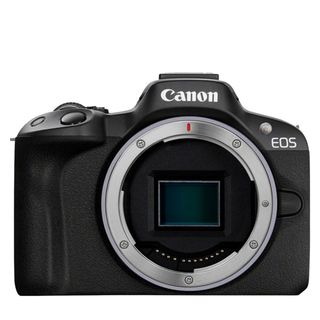
The R50 is aimed at content creators who need something compact enough to carry around but capable enough to get the shot when shooting stills and video.
Read more below

The reason I recommend the C70 is because it's a true cinema camera, not a hybrid one. If you want real professional performance, get this.
Read more below

I love the fact that Canon went right back to the drawing board to create this. It isn't just a normal mirrorless camera with some video specs; it's built for the sole purpose of pointing at you and filming a vlog.
Read more below

There has to be a good reason to opt for a DSLR in this day and age, and I think the 90D still presents a great case.
Read more below
The best Canon cameras you can buy today
Why you can trust Digital Camera World
Best Canon camera overall
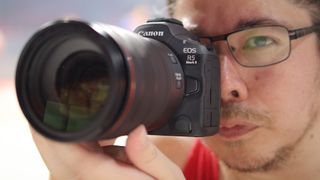
Specifications
Reasons to buy
Reasons to avoid
I was so blown away by the original Canon EOS R5 that I bought one on release day – it is that good. Yet somehow Canon has exceeded my expectations and made the sequel even better. For my money (quite literally) it does anything and everything you could ask of a camera.
Not only do you get high-resolution 45MP stills as standard, but it can also use its AI powers to upscale any image into a 180MP JPEG/HEIF. Despite pushing so many megapixels, it offers lightning-fast continuous shooting, too, delivering bursts of up to 30fps.
The R5 II's autofocus is so good that I called it a cheat code, and I stand by that: Dual Pixel CMOS AF II is the best system in the industry right now – better than that of the Sony A9 III and Nikon Z8 / Z9. Canon has even upped the ante with eye-control autofocus where you can just look at your subject and the camera will focus on them, is it magic? It feels like it.
It's also a monster at video, with its headline RAW 8K 30p video being utterly gorgeous – and it can be oversampled for stunning 4K HQ (though the standard 4K mode is nothing to write home about). The well-publicized overheating limits of the first model are gone, with the R5 II handling heat like a champ, and in truth, I've never had any problems in personal use.
Add in weather sealing, rock-solid in-body image stabilization (up to 8 stops), and support for superfast CFexpress B cards (as well as standard SD cards) and this is a camera that can take on any task.
Read my full Canon EOS R5 Mark II review for more details
Best budget Canon camera
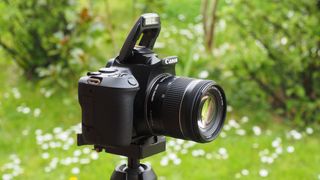
Specifications
Reasons to buy
Reasons to avoid
Not everyone needs all the firepower – or all the expense – of a camera like the R5. For photography students or complete newcomers, a budget DSLR body can be the best option – and I think the Rebel SL3 (aka the 250D in Europe) is capable, cheap, and a great way into the Canon ecosystem.
It uses older DSLR technology, so it lacks the features and finesse of mirrorless cameras, but when you're learning you don't need all the bells and whistles! And just because it's cheap, doesn't mean it's crap; I've taken images with this 24.1MP APS-C sensor that look as good as anything I've shot on a $4,000 camera. It's also compact and comfortable to hold – in fact, its ergonomics are better than some much newer cameras I've used!
The SL2 is a superb starter camera at a superb price, and the EF and EF-S lenses you use with it can be adapted to Canon's mirrorless EOS R cameras – so when your skills grow and you upgrade your body, you can keep using your lenses.
Read our full Canon EOS Rebel SL3 / 250D review for more details
Best Canon camera for wildlife

Specifications
Reasons to buy
Reasons to avoid
The R7 is Canon's top-flight APS-C camera, and is such a powerhouse that it actually packs more megapixels (32.5MP) than some of its full-frame cameras! While it's a fantastic all-rounder, what I love to use it for most is wildlife photographer.
This is mainly due to the 1.6x crop factor of Canon's APS-C sensor, which increases the equivalent focal length of your lenses; when I mount the Canon RF 600mm on the R7 it becomes an effective 960mm lens! So, between the longer focal length giving you more reach and the extra resolution giving you more room to crop, I find this a uniquely capable camera for wildlife.
It rattles off stills at up to 30fps, so you never miss a moment, and packs the same autofocus system as the R5, so the camera never misses a beat. And if you shoot video it can capture 4K that's oversampled from 7K, for maximum detail. It's weather-sealed to withstand outdoor conditions, packs dual memory cards and a joystick, and on top of everything it's image-stabilized as well.
Read my full Canon EOS R7 review for more details
Best Canon camera for beginners
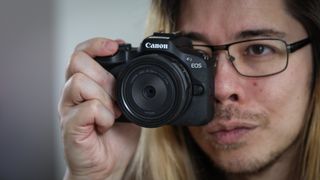
Specifications
Reasons to buy
Reasons to avoid
In my opinion, there's no better way to learn photography than to use a mirrorless camera. The viewfinder and rear screen show you exactly what your images will look like, as you adjust the exposure settings, which helps you understand how things like aperture and shutter speed work. And what I really love about the R100 is that it has a guided user interface, with menus that show you how to achieve effects such as blurred backgrounds or frozen motion.
While it's a beginner camera, the R100 is still amazingly capable. Canon's trusty 24.1MP APS-C sensor delivers images worthy of far more advanced cameras – I was blown away by the quality of the files. I also love that it's got a microphone jack, which is rare on a camera at this price point – so if you want to shoot video you can get great quality sound using a dedicated mic (rather than relying on the built-in mics). That said, there are some compromises with 4K video; it incurs a 1.55x crop and doesn't make use of the brilliant Dual Pixel Autofocus.
The R100 is an incredibly compact camera, and paired with the similarly compact Canon RF-S lenses fits great in a sling bag or handbag for run-and-gun shooting. However, those with larger hands might find it a bit too small (and it's also worth noting that the screen is fixed, and doesn't offer touch-control). Those few foibles aside, this is a brilliant beginner camera.
Read my full Canon EOS R100 review for more details
Best hybrid Canon camera
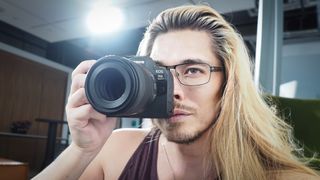
Specifications
Reasons to buy
Reasons to avoid
Ever since the DSLR days, the 6-series has carved a niche as Canon's all-rounder range. And the R6 Mark II is a worthy successor to the Canon EOS 6D Mark II (the last DSLR I bought!) offering an upgrade in every department.
This is one of the most formidable hybrid cameras around, punching well above its weight. I was amazed at the 40fps burst rate, which is even faster than the flagship EOS R3! It uses the same flagship autofocus system, too, so this is a camera that's up to the task of sports, wildlife and fast action. The 24.2MP sensor can capture oversampled 6K for gorgeous 4K 60p video, too – and Canon has introduced one of my favorite features, pre-capture, which enables the camera to record 0.5 seconds of stills or up to 5 seconds of video before you fully depress the shutter.
My only reservations with the camera are the buffer, which at 75 RAW images did catch up with me when shooting at 40fps – possibly due to the choice of SD cards instead of CFexpress (though that does keep the cost down). Also be aware that you're limited 40 minutes of oversampled 4K 60p or 6 hours of 4K 30p before the camera cuts off.
Read my full Canon EOS R6 Mark II review for more details
Best professional Canon camera
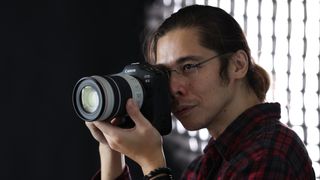
Specifications
Reasons to buy
Reasons to avoid
Right now this is Canon's flagship camera, and for good reason. Boasting a pro form factor with integrated vertical grip (and bigger battery), I find it the best-balanced EOS R camera when using pro lenses and long telephotos. It's also a technological powerhouse, with a feature that I don't think gets enough love: Eye Control AF.
Depending on what you use it for, this really is a game-changer. There are eight infrared blasters in the viewfinder that track the movement of your eye; this enables you to move the focus point simply by looking at a subject, which is faster than moving the joystick or relying on the accuracy of the autofocus. If you're shooting a celebrity in a crowd, for example, the AF won't necessarily know who to focus on… but now you can just look at the celeb, to move the AF point there, then half-press the shutter for the AF to lock on. It's like an autofocus hotkey, and it even works with my glasses on!
Of course, this is a sports camera – so you're getting superfast 30fps shooting for both JPEG and RAW, powered by the same cheat code autofocus found in the EOS R5. I'm also a big fan of its video capabilities (even though the top-tier C-Log 2 isn't offered in-camera), especially the 6K 60p and the sublime 4K 120p, and the image stabilization that keeps every shot rock-steady.
Read my full Canon EOS R3 review for more details
Best Canon camera for creators
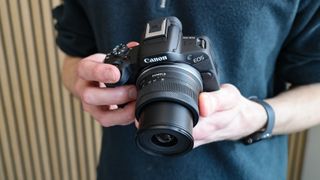
Specifications
Reasons to buy
Reasons to avoid
The direct replacement for the best-selling Canon EOS M50 Mark II, the R50 is aimed at content creators who need something compact enough to carry around with them but capable enough to get the shot when shooting stills and video. At first glance this looks exactly like the M50, but there are plenty of changes under the hood – and the one I'm most pleased with is the lack of crop when shooting 4K video! (Though you do still have the native 1.6x crop of the APS-C sensor.)
I was also thrilled that Canon added the Dual Pixel CMOS AF II system, which makes this an incredibly potent camera for vlogging and video (especially with social media-friendly features like vertical video capture). It's not the full fat Dual Pixel, as it doesn't have the full suite of subject tracking (for things like planes and horses), nor does it have automatic eye priority – but the face and eye detection still perform brilliantly.
It's no slouch for stills, either, as I took some stunning shots with the 24.2MP sensor. Like the R100, it lacks image stabilization and is very compact – so those with larger hands should give it a test drive first. Otherwise, if you're a YouTuber junkie, this is a fantastic camera to sharpen your skills.
Read my full Canon EOS R50 review for more details
Best Canon camera for video
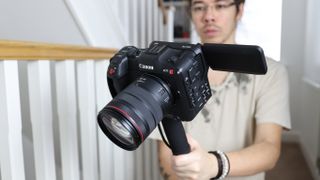
Specifications
Reasons to buy
Reasons to avoid
If you want to put a video on YouTube, go for the R50. But if you want real professional performance (without shelling out for the very best cinema cameras), you've got two options: the Canon EOS R5C or the EOS C70. In many respects the R5C is actually the superior camera, offering full frame 8K video and all the latest technology. However, it offers it in the body of an R5 – and that comes with some compromises.
The reason I recommend the C70 is because it's a true cinema camera, not a hybrid one. That means you get connections like mini XLR and Time Code BNC / HDMI. You get a Dual Gain Output sensor with 16 stops of dynamic range. You get a bigger body with all the controls and inputs and buttons you need, multiple mounting points, and most importantly a huge battery that will last serious filming sessions.
This is effectively the Canon EOS C300 Mark III in a smaller body with an RF mount. Canon even makes a 0.71x speedbooster that enables you to use EF glass on the Super35 sensor with the same field of view as a full-frame camera. If you need a proper production camera in a run-and-gun setup, this is the one I'd go for. It's an offically Netflix-approved camera, too!
Read my full Canon EOS C70 review for more details
Best Canon camera for vlogging
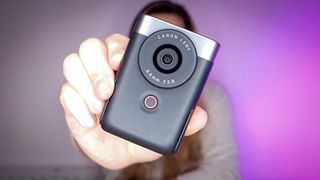
Specifications
Reasons to buy
Reasons to avoid
People look at me funny when I recommend this camera, but I'm serious: if you want an all-in-one, easy-to-use, fire-and-forget camera to film a vlog, the PowerShot V10 is what you need. I love the fact that Canon went right back to the drawing board to create it. It isn't just a normal mirrorless camera with some video specs; it's built for the sole purpose of pointing at you and filming a vlog.
It's positively pocket-sized, being as small as a packet of cigarettes (if you don't smoke, it's about the same size as the LCD screen on a camera like the EOS R5). Using it is simple: just put it on the table in front of you, using the built-in stand, and press the big red record button. That's it! No fiddling with codecs or zooming in or out or changing settings, you literally point and press record – it's exactly as simple as using your smartphone.
It's easy to handhold (unlike trying to hold a mirrorless camera backwards while filming yourself), the touchscreen is great quality and very responsive, the autofocus and image stabilization are great, and the video quality (along with the stills) is super impressive. As someone who has a small YouTube channel and has spent far too much time fiddling with lenses and settings before I can film anything, I love this camera and how idiot-proof it is!
Read my full Canon PowerShot V10 review for more details
Best Canon DSLR
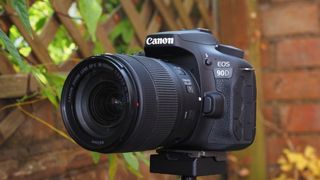
Specifications
Reasons to buy
Reasons to avoid
Okay, why do I rate this "the best" DSLR over the workhorse Canon EOS 5D Mark IV and former flagship Canon EOS-1D X Mark III? One key factor: the price. Both those cameras still cost quite a chunk of change, and I'll be honest – if you're going to spend that much money on a camera, you're going to get far more bang for your buck buying mirrorless.
There has to be a good reason to opt for a DSLR in this day and age, and I think the 90D still presents a great case. Like the EOS R7, it has a pixel-packed 32.5MP sensor, uncropped 4K video and robust weather sealing. Its 10fps burst rate isn't nearly as fast, but is more than enough for anything short of top-tier wildlife or sports shooting.
I would argue that the 90D's beefier body is more comfortable than its svelte mirrorless counterparts, and plenty of people (including my colleague Sebastian) prefer an optical viewfinder over the modern electronic version. Above all, though, the best reason to go for the 90D is its stunning battery life that leaves mirrorless cameras in the dust.
Read our full Canon EOS 90D review for more details
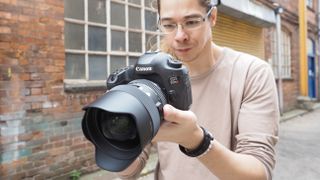
FAQs
What Canon camera do most photographers use?
The 5D line of workhorse DSLRs – the most recent model being the Canon EOS 5D Mark IV – has proved enduringly popular over the years, both with enthusiasts and professional photographers.
The now-discontinued Canon EOS M50 was the company's most popular mirrorless camera pretty much since the day it launched, being the go-to camera for a generation of vloggers and content creators. It has since been replaced by the Canon EOS R50.
Best Canon camera for beginners?
For first-time camera owners and photography students, the Canon EOS Rebel SL3 / EOS 250D DSLR is still a good choice, while in the R-series mirrorless range, the Canon EOS R100 is absolutely perfect for beginners.
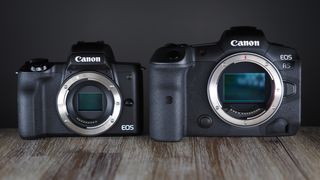
Is EOS M discontinued?
Canon officially discontinued the EOS M line of mirrorless cameras in late 2023. Bodies like the Canon EOS M50 Mark II are still available, as are the best Canon EF-M lenses, but there will be no new cameras or lenses for the system.
Do Canon DSLR lenses work on mirrorless cameras?
Yes! Canon EF and EF-S lenses can be easily adapted to the Canon RF-mount (and the discontinued Canon EF-M mount) using official and unofficial mount adapters.
However, RF (and EF-M) lenses cannot be adapted to EF-mount DSLRs. In short, DSLR lenses work on mirrorless cameras, but mirrorless lenses do not work on DSLRs.
What does "EOS" stand for in Canon EOS?
EOS isn't an acronym and doesn't stand for anything. It is a stylized version of the name Eos, the Greek goddess of the dawn.
How we test cameras
I’ve personally used every camera on this list, so I’m sharing my hands-on experience with each one. When I evaluate a camera, I take it out into the field for real-world shooting. For wildlife cameras, I photograph animals; for sports cameras, I shoot live events, and so on. I believe it’s essential to test cameras in the context of what they’re designed to do.
I also often test cameras in a professional working environment, like when I’m shooting commissions for clients. I assess everything from functions and features to ergonomics and ease of use, image quality, weather sealing, retail price, and battery life.
Additionally, my colleague Ben Andrews manages our in-house testing lab. He conducts tests on camera resolution, dynamic range, and noise under scientifically controlled conditions using tools like Imatest Master and DxO Analyzer. All DSLRs and mirrorless cameras undergo these tests, and sometimes high-end compact cameras as well.
Find out more about how we test and review on Digital Camera World
Get the Digital Camera World Newsletter
The best camera deals, reviews, product advice, and unmissable photography news, direct to your inbox!

James has 22 years experience as a journalist, serving as editor of Digital Camera World for 6 of them. He started working in the photography industry in 2014, product testing and shooting ad campaigns for Olympus, as well as clients like Aston Martin Racing, Elinchrom and L'Oréal. An Olympus / OM System, Canon and Hasselblad shooter, he has a wealth of knowledge on cameras of all makes – and he loves instant cameras, too.